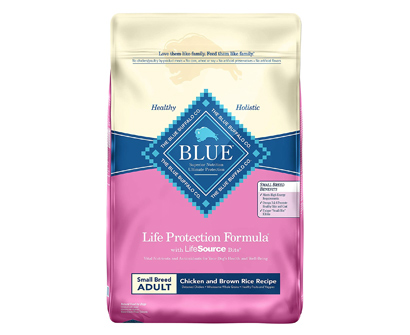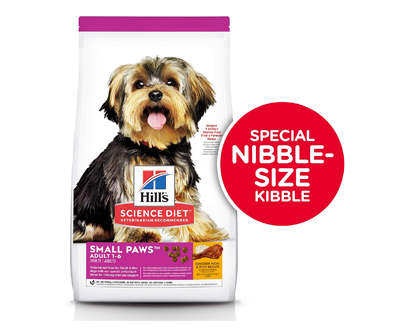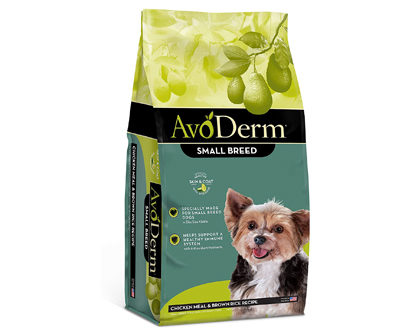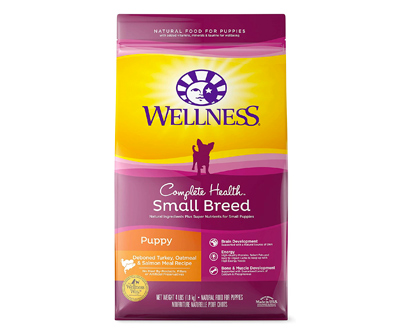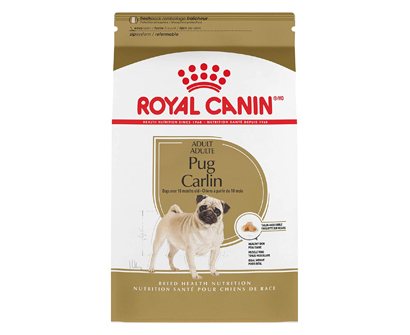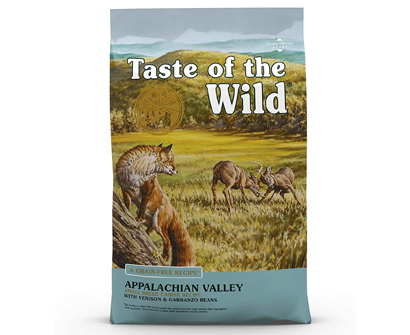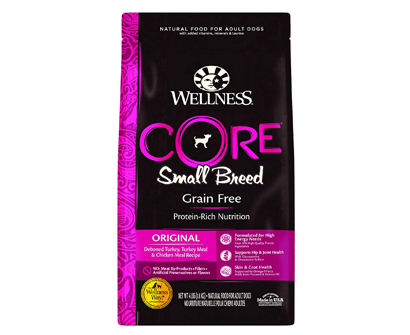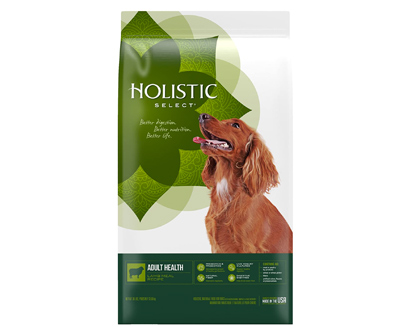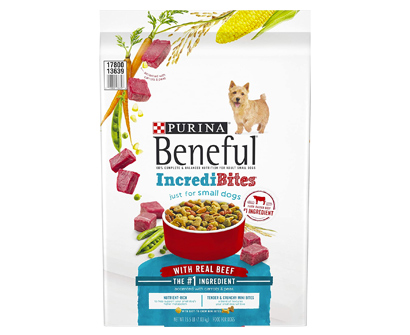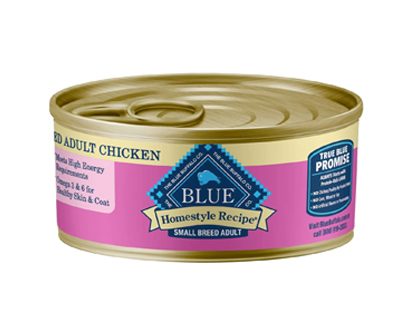The Best Dog Food for Pugs in 2022
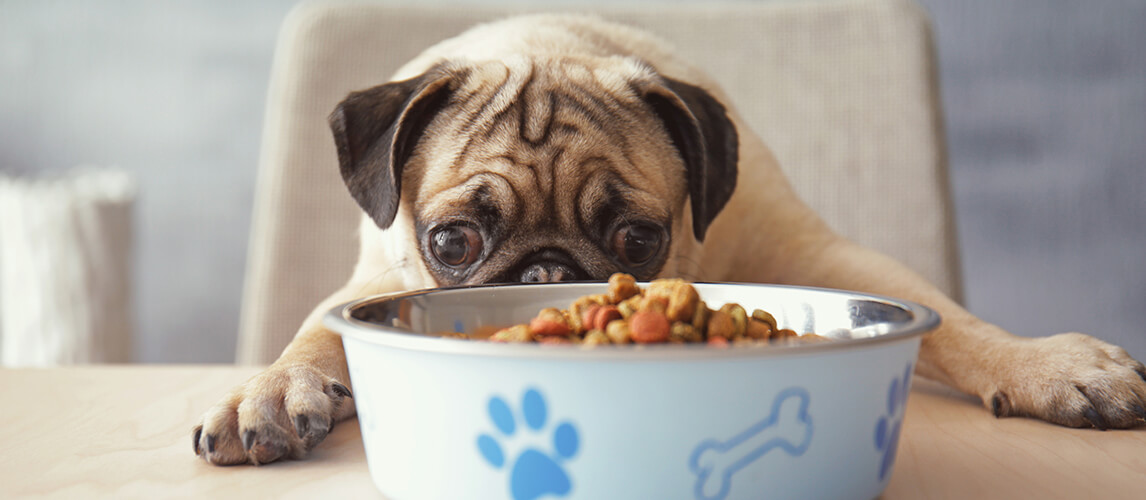
- The Best Dog Food for Pug
- 1. Blue Buffalo Life Protection Dry Dog Food
- 2. Hill’s Science Diet Dry Dog Food
- 3. AvoDerm Natural Small Breed Dry Dog Food
- 4. Wellness Complete Small Breed Dog Food
- 5. Royal Canin Health Nutrition Pug Dog Food
- 6. Taste of The Wild High Protein Dry Dog Food
- 7. Wellness CORE Small Breed Dry Dog Food
- 8. Holistic Select Natural Dry Dog Food
- 9. Purina Beneful Adult Dry Dog Food
- 10. Blue Buffalo Small Breed Wet Dog Food
The unusual, squashed-up appearance of pugs have made them a firm favorite amongst dog lovers. If you have one of these canine companions, one of your most important responsibilities is making sure that they enjoy a healthy diet. The type of food which you feed your dog should be dependent on their breed, as well as their lifestyle and individual health concerns. This blog post is all about the best dog food for pugs.
Pugs are known to need special care in their diets so that you don’t negatively affect their sensitive stomachs. Since they are prone to getting overweight, making sure that you offer them a balanced diet is especially important. So, here’s a list of 10 of our favorite pug dog foods currently on the market.
The Best Dog Food for Pug
1. Blue Buffalo Life Protection Dry Dog Food
Key Features
Chicken and brown rice recipe
Packed with protein and complex carbohydrates for smaller dogs
LifeSource bits contain antioxidants, vitamins and minerals
Just as you expect from a high-quality dog food, meat is the number one ingredient, which is important in maintaining lean muscles in your pooch.
The other main ingredients include whole grains, garden vegetables, and fruit, so there is an excellent combination of protein and complex carbohydrates to ensure that your dog has bags of energy.
The LifeSource bits are one of the most unique features of this best dog food for pugs. Essentially, these contain a controlled blend of antioxidants, vitamins and minerals, which support a strong immune system and a healthy oxidative balance.
2. Hill’s Science Diet Dry Dog Food
Key Features
Full of calcium and high-quality protein
Made in the USA with global ingredients
Vitamins C and E enhance disease immunity
If your pug is between one and six years old, this dry dog food provides them with precisely balanced nutrition. The smaller kibble is designed to be suitable for the small mouth of your funny-faced friend. The antioxidant blend includes vitamins C and E for a healthy immune system.
Essentially, this food gives your dog the energy they need during their prime stage of life. The calcium and high-quality protein contained within is designed to support both bone and muscle strength.
3. AvoDerm Natural Small Breed Dry Dog Food
Key Features
Contains omega-rich avocados
Premium protein ensures optimal nutrition
Made using simple ingredients – highly digestible
Made using a classic chicken and brown rice combo, this dry dog food provides optimal levels of protein. Another ingredient is the California avocados, which help to promote healthy skin and a lush coat.
While it contains a blend of vitamins, minerals, and antioxidants, the food does not include by-products, artificial flavors, colors or preservatives.
4. Wellness Complete Small Breed Dog Food
Key Features
DHA supports healthy brain development
Full of antioxidants
Omega 3s and 6s support healthy skin and coat
If you are looking for pug puppy food, this is an excellent option to support their healthy growth and development. Made using turkey, oatmeal, and salmon, the smaller kibble size supports strong brain and eye development.
Since your puppy has unique nutritional needs, it is important that you give them the best food for pug puppies. And since the ingredients are all-natural, you don’t have to worry about wheat, corn, meat by-products or artificial preservatives being an issue.
5. Royal Canin Health Nutrition Pug Dog Food
A popular choice from the highly-trusted brand, this Royal Canin pug food is specifically designed for your adult pug. The kibble is specially made to be easy to eat with their short, flat muzzle. Strong bones and good joint health are just two of the positive features offered.
The team at Royal Canin develop a formula which is based on each breed’s lifestyle, needs, and possible health issues to come up with a food that suits your dog perfectly.
6. Taste of The Wild High Protein Dry Dog Food
Real venison provides the main protein source of this dog food from Taste of the Wild, but it also contains plenty of superfoods which feature antioxidants and a blend of fatty acids.
As well as being nutrient-rich, this food is also highly digestible, which makes it perfect for pugs who famously have issues digesting their meals. Sustainable ingredients around the world are used by this company who make their food in the USA using advanced safety protocols.
7. Wellness CORE Small Breed Dry Dog Food
Key Features
80% more meat than traditional grain-based foods
Packed with antioxidants, Omega fatty acids, and probiotics
Balance of natural ingredients
Another highly popular pug food, this one provides balanced nutrition, and you can rest assured that it is grain-free. The protein-rich formula is packed with premium turkey and chicken to support your dog’s active lifestyle.
At the heart of the dog food is the balance of natural ingredients which give your dog plenty to get their teeth stuck into. And since the ingredients are all-natural, you don’t have to worry about artificial preservatives being an issue.
8. Holistic Select Natural Dry Dog Food
Key Features
Premium, all-natural ingredients
Encourages good digestive health
Follows strict standards of food production
Focused on a blend of probiotics, natural fibers, digestive enzymes, and botanicals, the quality ingredients in this dry dog food include premium protein from real lamb. Since it is an all-natural formula, there is no need to be concerned about by-products and artificial preservatives.
Proudly made in the USA, quality is considered every step of the way in the manufacture of this premium dog food.
9. Purina Beneful Adult Dry Dog Food
Key Features
Nutrient-rich mini-bites
Real beef number one ingredient
Supports higher metabolism rate
Exclusively made for small dogs, farm-raised beef is the number one ingredient in this dry dog food. Also included are carrots and peas which help to give your dog the nutrients they need for a healthy lifestyle.
There are a couple of features which make this food great for smaller dogs. Firstly, the nutrient-rich recipe helps to support your dog’s quicker metabolism. Also, the bites are small and easy-to-chew which make them great for pugs.
10. Blue Buffalo Small Breed Wet Dog Food
Key Features
Contains blend of protein and complex carbohydrates
No chicken by-product meals
Enhanced with vitamins and minerals
So far, we have only talked about dry dog food, so here is one if you are looking for a wet food option. Meat is always present as the number one ingredient, but it is enhanced with vitamins and minerals to support the healthy lifestyle of your pup.
While some wet dog foods use wheat as a thickening agent, this one does not, and it also doesn’t contain any artificial flavors or preservatives.
Best Dog Food for Pugs Buying Guide & FAQ
What to Look for When Buying Dog Food for Pugs
Before you rush out to buy your pug food, you should start by looking through this next section which gives you more information on some specific features to look out for.
- Nutritional Guidelines
The food which you choose for your pug diet should be full of all the nutrients which they need. And since pugs love to eat, you need to make sure that what you are giving them is healthy and balanced! Their diet should center on high-quality protein and carbohydrates. Brands which are high in protein and low in calories can help less-active dogs to manage their weight. Watch out for too much corn and grains as these can induce joint problems. Also, by-product and fillers tend to be empty calories without nutritional value. We will look more into pugs’ nutritional needs in the next section.
Related Post: High Protein Dog Food
- Main Protein Source
As we have just mentioned, protein is a highly important source of food for your pug to give them the energy to sustain their adventurous lifestyles. However, not all protein sources were created equal. There are all sorts of different options out there ranging from beef to lamb to chicken. However, by-product meals should be avoided. Many of the brands which we have listed above specifically mention that they don’t contain any of these.
- Age
The age of your dog also plays a role in how often they need to be fed and the type of food you offer them. You should be looking to make the switch from puppy to adult food when they are 10-12 months old. If you have an older dog, look out for senior dog food which helps to keep them full nourished in their advancing years. The age of your dog also plays a role in how often you should feed them – another point which we will explore in more detail later.
- Food Type
Most foods which we have chosen in this guide are dry kibbles, which many pug owners decide is the best option as it is suitably-shaped, small, and easy to chew. However, if your dog prefers to give your dog wet food, we have also selected one of these too. The main problem with wet food is that it is not as good for their dental health and can also lead to wet and runny stools which can be a nightmare to clean up. However, if your dog is missing teeth, has gum issues, or there is some other reason why dry food could cause them pain, wet pug food may well be the better option.
- Package Size
When you are first trying out a new food for your dog, it makes sense that you don’t get a huge bag straight away. After all, you can’t be certain that they are going to like it. Also, pugs are small and aren’t going to need huge quantities of kibble, so you should choose based on the shelf life of the food.
- Country of Manufacture
Much of the food which we discussed above is made in the USA, which many take to be an indication of quality. Often, special ingredients are sourced from elsewhere, and it is worth taking a closer look at these places. After all, you don’t want to end up buying a dog food which is harmful to your pug in any way.

Nutritional Needs of Pugs
Since pugs are high-energy dogs who love playing, their food needs to give them plenty of energy. At the same time, they tend to overeat, so the kibble should be filling enough to stop this from occurring. As already mentioned, high protein and complex carbohydrates will help to ensure a slow energy release.
- Protein
You should be aiming to feed your dog around 18% crude protein, but for puppies, this figure should increase to 22% to meet their growth and development needs. Quality protein from an animal should be the primary ingredient of the pug food you select. Too much animal by-products are not a good thing. If the food contains this, it needs to be balanced out with different protein sources such as fish. Otherwise, it is best avoiding.
- Complex Carbohydrates
Your energetic pug needs slow-release energy throughout the course of the day, and that is exactly what complex carbohydrates will give them. They also help to prevent spikes and crashes in their blood sugar. Many pug food brands get their carbohydrate content from sources such as brown rice, potatoes, or sweet potatoes.
- Crude Fats
While crude fats should make up only around 5-10% of your pug’s diet, they still form an important part of it. Chicken fat and fish oils are a couple of the places from which they can derive this substance from.
- Fatty Acids
Every dog’s diet should include fatty acids of some description, and they are essential to the coat and skin health of your furry friend. These help to maintain their skin’s moisture levels, stopping it from drying out and the hair becoming more brittle and shedding too easily.
Ingredients to Avoid Feeding Your Pug
Just like there are plenty of ingredients which are good for your pug, there are also plenty more which can be harmful to their health. Obviously, you should know the list of food which is harmful to all dogs. This includes grapes, onions, raisins, and chocolate. However, some specific dry dog food ingredients can also be harmful to their health.
To start off with, you should watch out for fillers. High cereal or soya content can be an indication that the food is inferior quality, and this can also put digestive health at risk. When these items ferment in the stomach, this can lead to digestive issues. You should be looking to give your pug plenty of protein but remember that animal by-products do not provide quality protein. If your dog suffers from sensitivities or allergies, you should avoid feeding them wheat or other sources of gluten as these can exacerbate the issue.
Potential Pug Health Problems
Just like other specific breeds of dog, pugs can suffer from some health issues which are specific to them. And feeding your pup an unbalanced diet can end up exacerbating some of these issues, which is why it is so important that you watch what goes into their body.
- Allergies
Pugs are prone to developing allergies such as irritated skin and dandruff. A lot of these come from genetics, so there is not much that you can do about them directly. But you can try switching their food to a grain-free formula to reduce any irritation and cut down on their dandruff issues. For a wider selection of choices, check out our grain free dog food guide.
- Breathing Problems
While the wrinkly face of the pug is one of the main reasons why they have become so iconic, their wide head and short nose can result in breathing issues. If your dog starts to put on weight, this can end up making the issue worse by putting additional pressure on their respiratory system and making it harder for them to breathe normally.
- Hip Dysplasia
Pugs are second on the breed list for the highest percentage of hip dysplasia cases. If they are carrying around excess weight, this can add an additional risk factor that they are going to suffer. So, feeding your dog a balanced diet is a good way of cutting back on their chances of gaining weight, and therefore reducing the chances that hip dysplasia will be an issue for them.
- Eye Trouble
Pugs can often suffer from conditions which reduce their tear production and cause their eyes to dry out. While this condition is treatable with the proper medication and care, it often takes a lifetime of therapy to stop the issues returning. The size and nature of their eyes can lead to difficulties. Proptosis is a common condition, which essentially means that the eyeball gets dislodged from the socket and the eyelid clamps behind it.
- Pug Dog Encephalitis
A little-understood condition, encephalitis causes an inflammation to the brain which can result in seizures, blindness, comas, and death. Experts believe that this is genetic condition rather than one which is impacted by lifestyle, so you should check the family history of the pug before if you are looking to buy one.

Our Top Pick
Our top pick of the best food for pugs, Blue Buffalo always features real meat as the number one ingredient, and they supplement this with whole grains, garden vegetables, and fruit. The blend of complex carbs and protein make it perfect for active lifestyles.
Also, it does not contain any of the stuff which can be bad for your pug such as corn, soy, wheat, meat by-products, artificial colors, flavors or preservatives.
All-in-all, it is a highly popular and respected choice which adult pugs love, and we have decided that it deserves to top our list as well.
FAQ
Q: How often should my Pug eat?
When it comes to feeding your dog, you have two main options; free feeding and scheduled feeding. Free feeding involves leaving the food out for them to eat whenever they like. Scheduled feeding involves offering a set number of meals at set times during the day. For pugs over 12 weeks old, scheduled feeding tends to be the better option as you can control exactly how much they are eating, which is important as we have already mentioned how prone this breed is overeating and putting on weight.
Adolescent and adult pugs can be fed three meals per day, which helps to avoid issues involving stomach bile being thrown up. However, if you find that your pug doesn’t like eating in the middle of the day, you can reduce this number to twice a day. Dry snacks can be used to help your dog get through to their evening meal time.
As a rule of thumb, you should feed your pug 40 calories for every pound of body weight. However, other factors which you need to take into account include their fitness levels, daily activity, and metabolism. And if your dog is already overweight, you should reduce their calorie intake. However, especially active dogs will need more calories to support their busy lifestyle. The number of calories can vary by as much as 30% either way based on these factors.
Q: How much puppy food should I feed my Pug puppy?
As for pug puppies, you should feed them three times per day – in the morning, at midday, and in the evening. You should give them 50 calories per pound of body weight, but this is also variable by 30%. But you need to ensure that the calories come from high-quality sources. In addition to their main meals, you can also offer them several healthy snacks which offer different developmental properties and help to ensure that they get the balance of nutrients needed.

